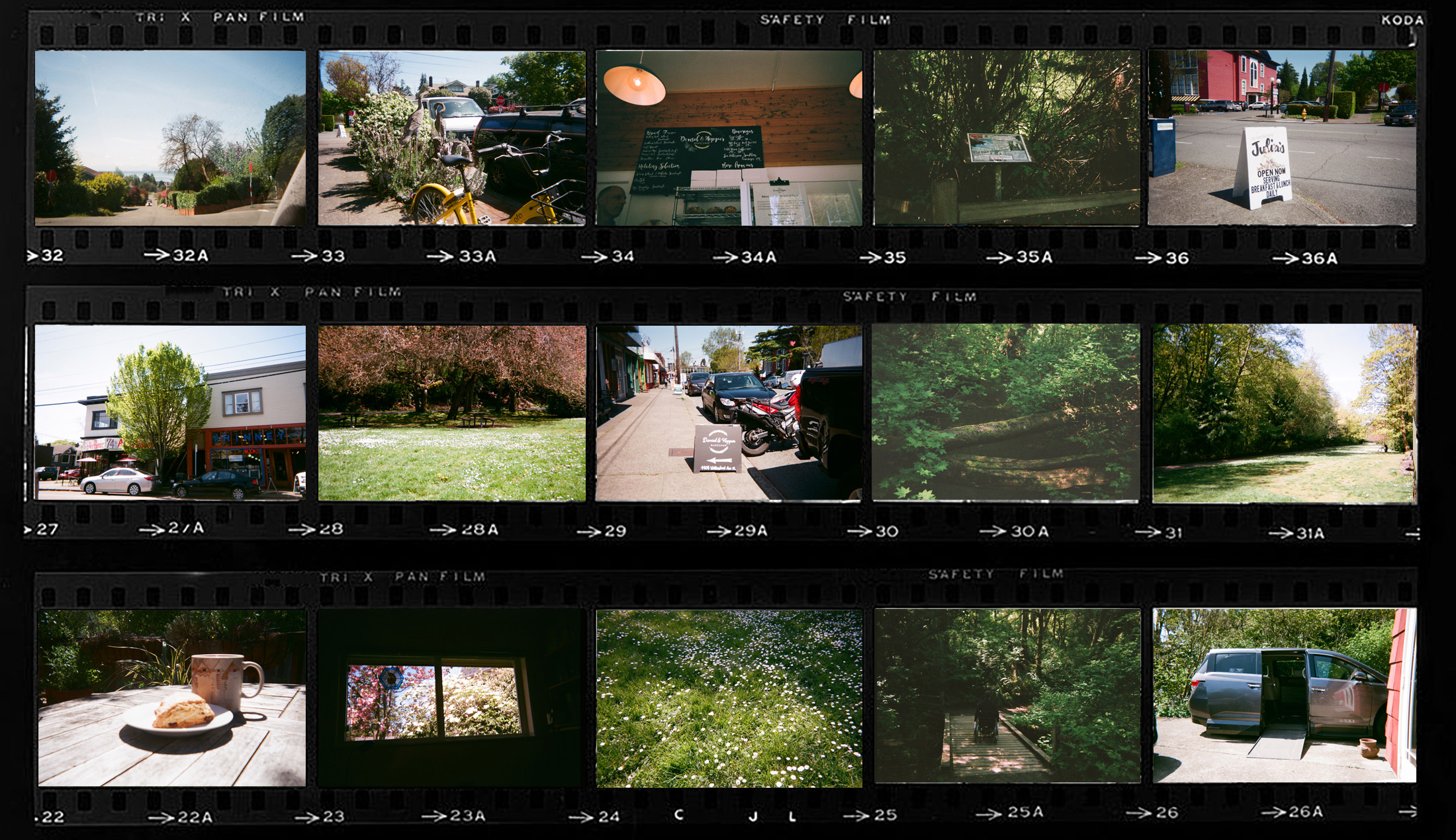“Developing Stories,” a series from Work in Progress, invites authors to carry a disposable camera and document whatever compels them—a reading, a walk in the woods, a tour of the writer’s hometown. This week we live a few days in the life of Nicola Griffith, author of So Lucky, and witness the beauty of Seattle and learn about her experience living with multiple sclerosis.

FOR THE LOVE OF GOD MONTRESOR
We live in Seattle, on the edge of a wooded ravine that runs down to Carkeek Park right on Puget Sound (part of the Salish Sea). We’re in the city, but it feels like the countryside: no sidewalks, and only about a third of a mile from the water; sometimes the only sound is birds, and wind in the trees. This is the view through my office window; the disposable camera unexpectedly turned my beautiful office window into the inaccessible window of a dank cell that I look through with yearning. An instant metaphor for before I got my wheelchair and, on a bad day, couldn’t leave the house.
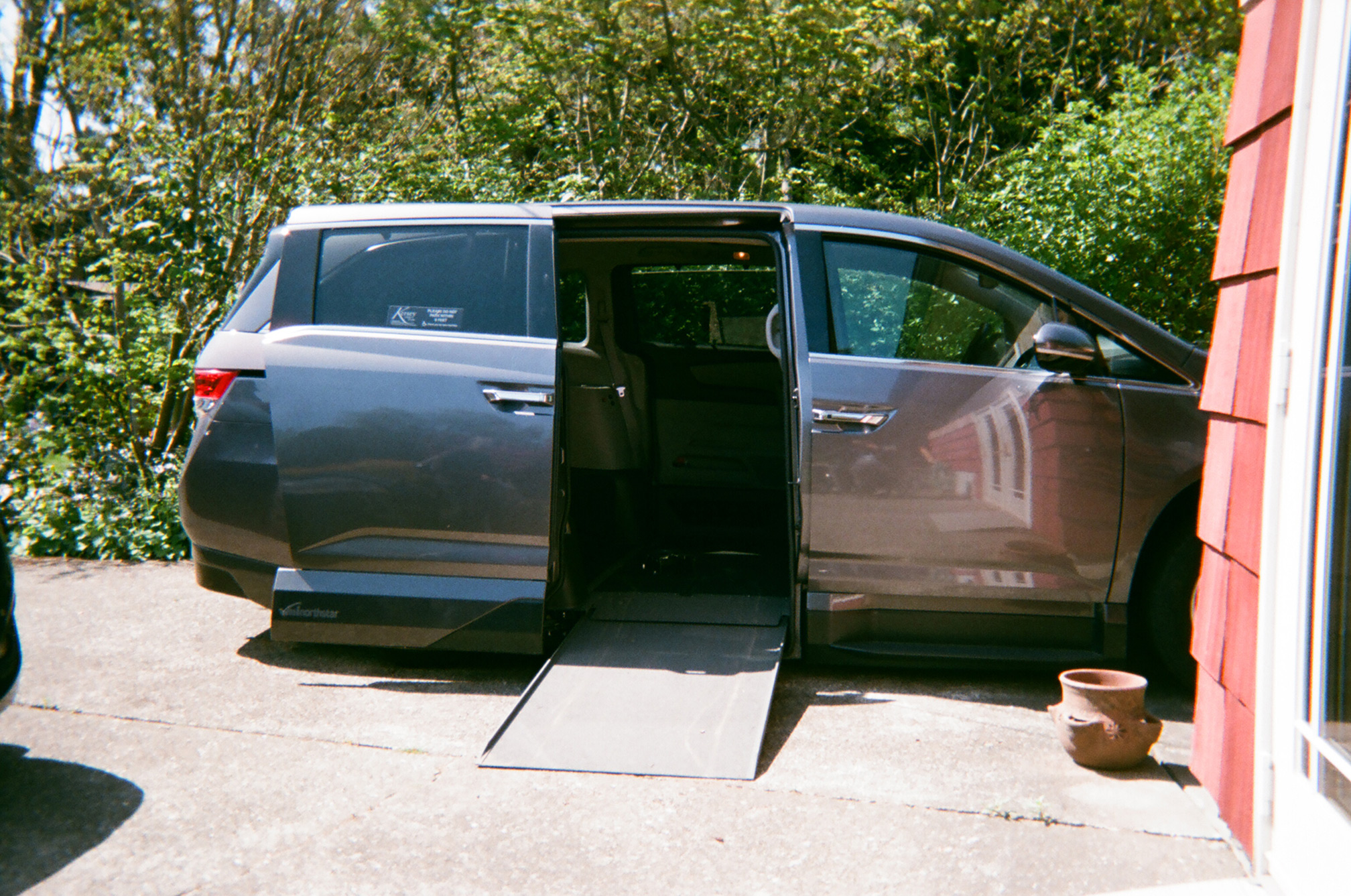
MAGIC CARPET
But now I have not only a wheelchair—a spiffy electric-assist (like an electric bike) wheelchair—but this excellent vehicle to put it in, which means I can go anywhere I want. As long as there’s, y’know, parking. And as long as the venues are accessible when I get there.
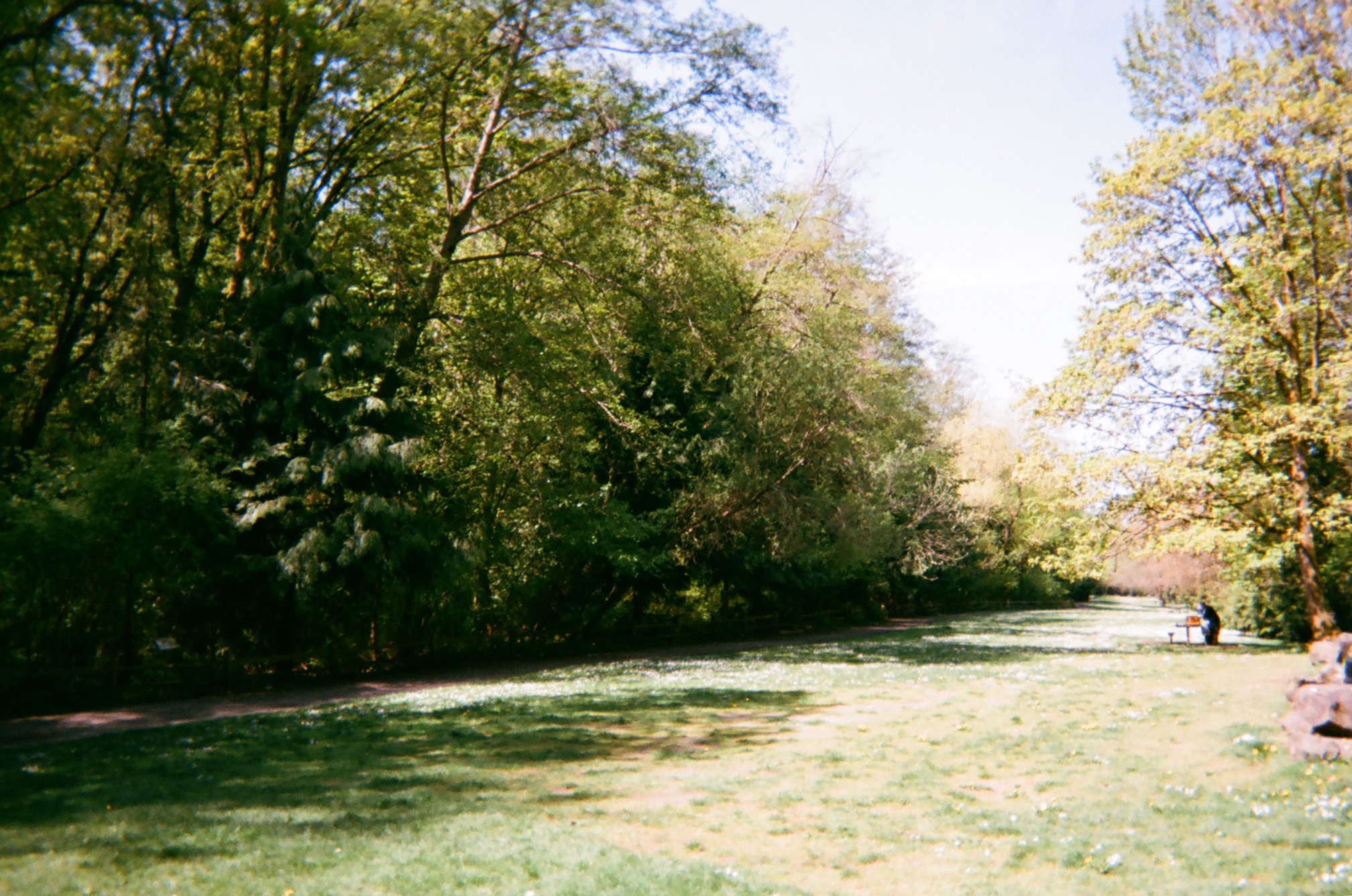
VANISHING POINT
This is Carkeek Park. It’s huge and (to English eyes) pretty wild: salmon, raccoons, coyotes, crows, osprey, and eagles. When I first moved here with Kelley, and I was pretty nimble on my crutches, we used to come to the park almost every day. This pic is the manicured grass between Piper’s Creek, a salmon stream, running under the trees on the left, and, on the right, hidden by more trees, the road that winds up the bluff.
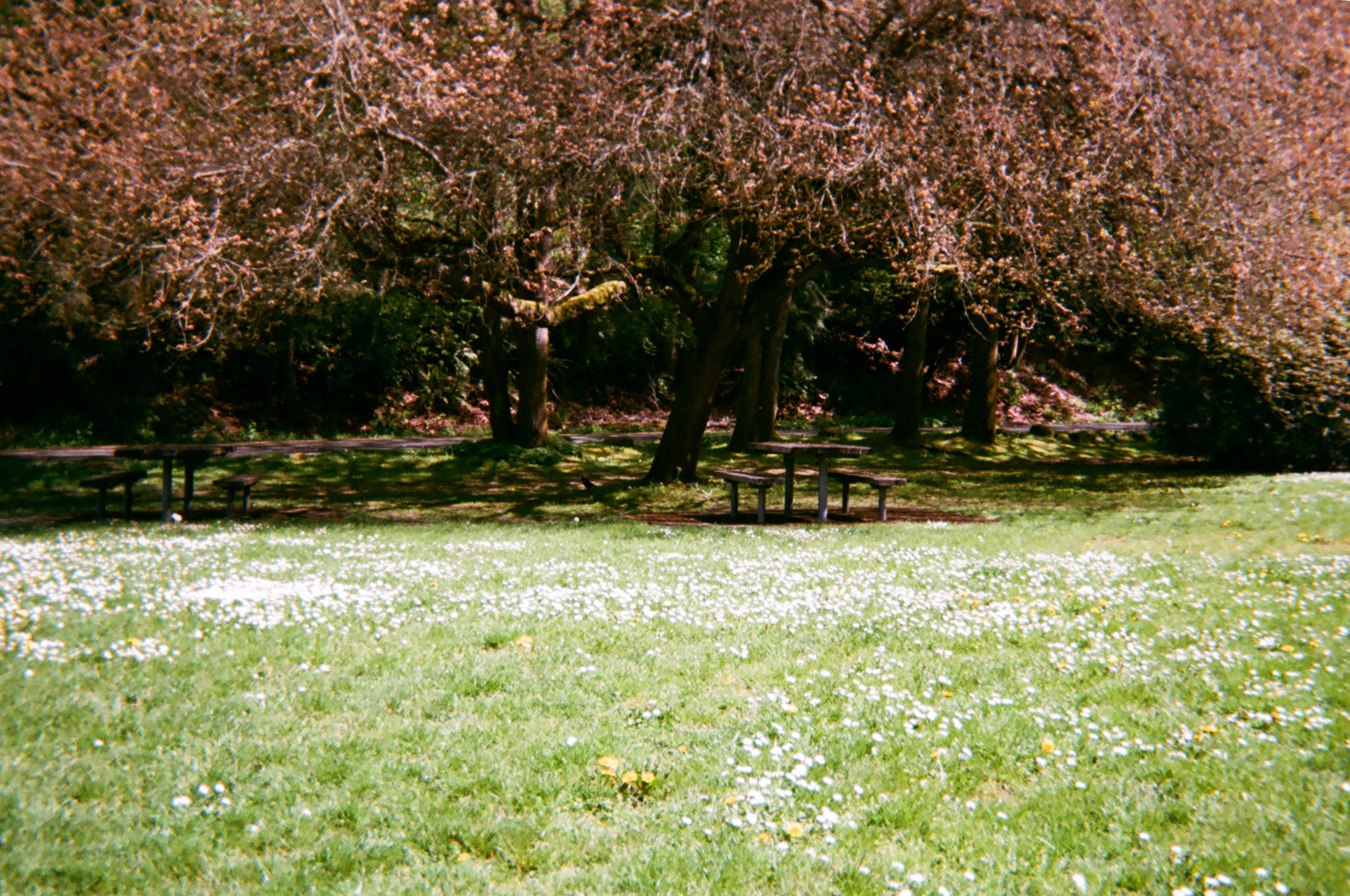
THE PICNIC TERRITORY
In summer, people gather to grill and party. We don’t grill, but we did picnic. Picnics are little fantasies in a magic hamper full of fairy food: Champagne, caviar, strawberries. A few years ago, though, it became impossible for me to navigate grass on my crutches so we stopped.
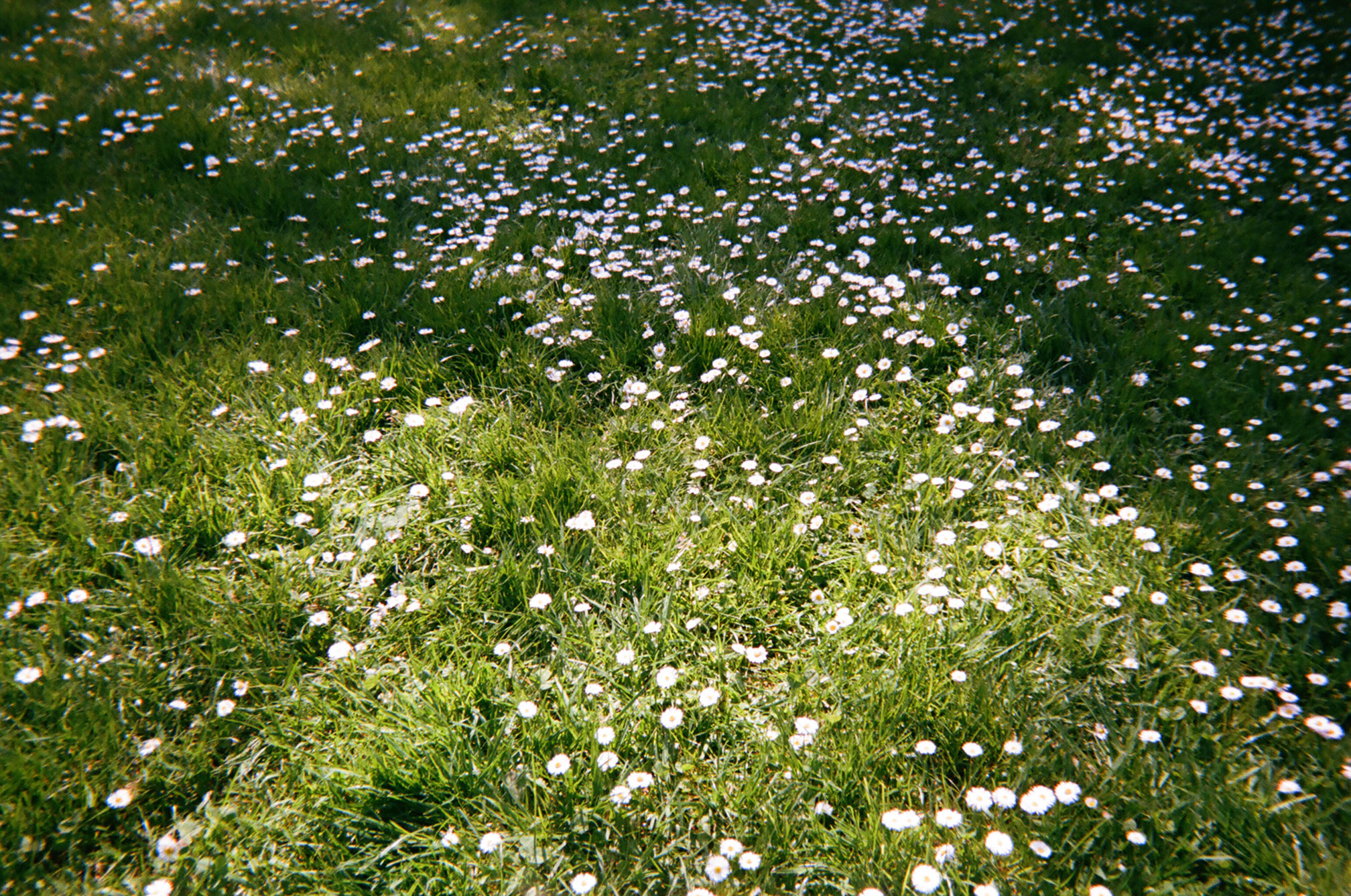
DAISIES
But now that I’ve reprogrammed the powered wheels in my chair (Not Approved by both manufacturer and dealer but, hey, my chair; I’ll hack it if I want to) I can trundle about off-road—when it’s dry, like today—and once again I can be right in the midst of these daisies. I see a picnic in our future…

YOU SHALL NOT PASS
Here’s me crossing Piper’s Creek. I love this fucking stream, love being under the trees.
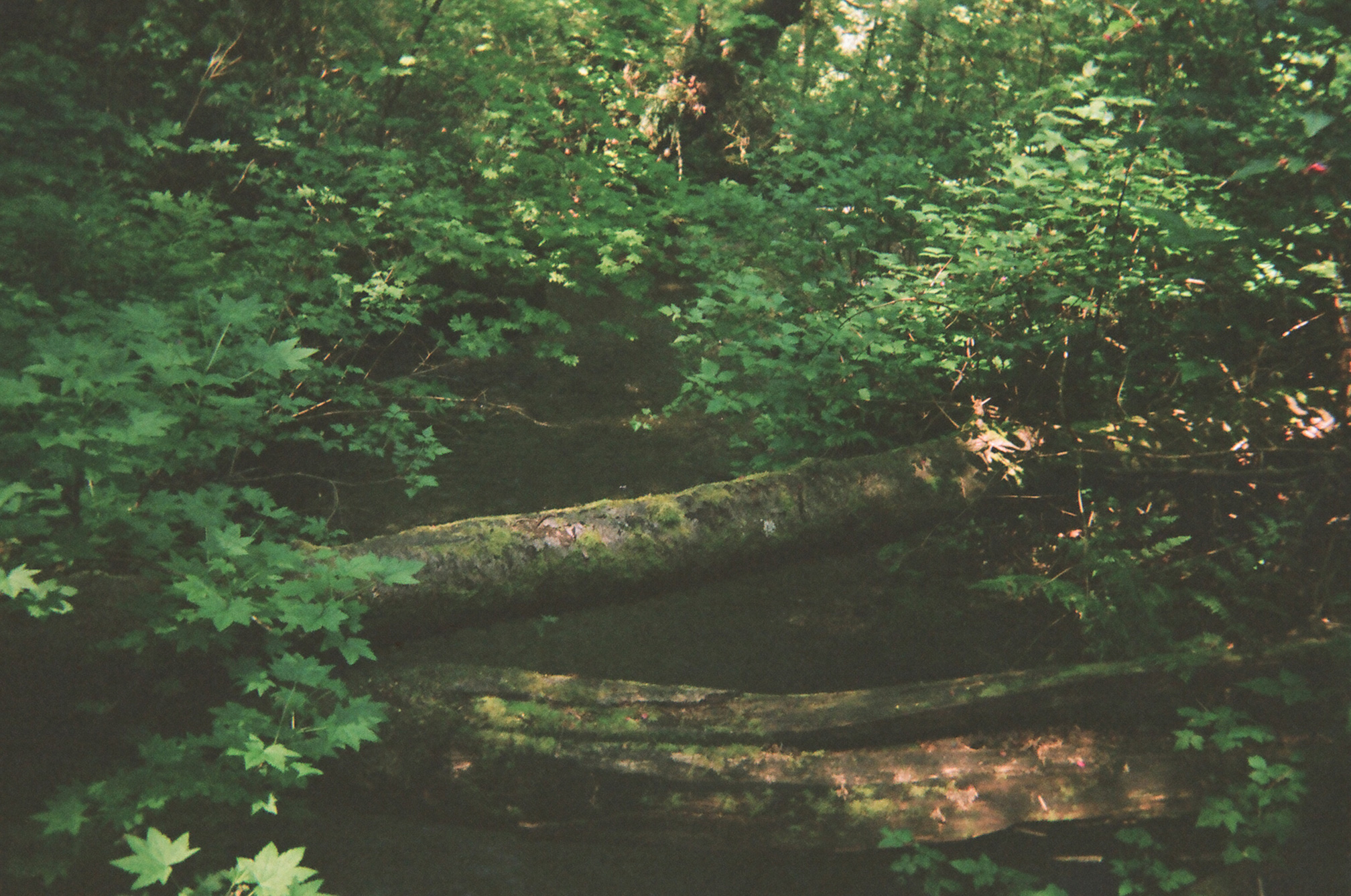
MURKY MYSTERY
In November and December, the creek’s full of spawning salmon. Sadly, this camera isn’t smart enough to adjust focus or aperture so everything looks dark and murky. But in real life it’s lovely: berries, vine maples, ferns, fallen broad leaf maple and alder, sandy banks with graveled streambed where salmon spawn and raccoons leave their paw prints.
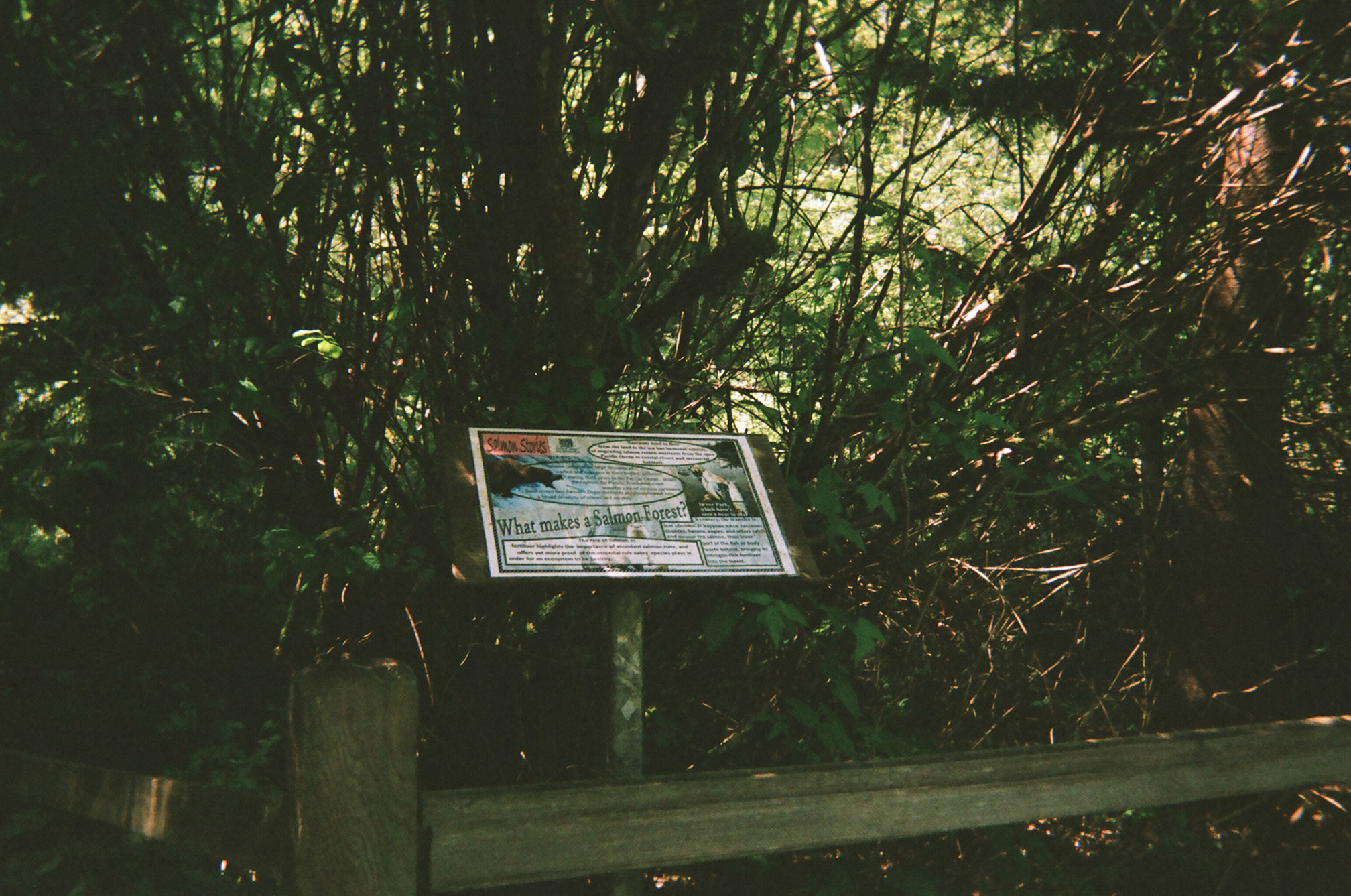
SALMON FOREST
“What makes a salmon forest?” Trees and salmon, duh, but also all the animals, streams, and other plants. But what brings a salmon forest back from the brink of death is love. Love and a mountain of work, and a mile-high stack of rules for those of us who live in the watershed: do not wash cars in the driveway; do not use insecticide; do recycle everything; do teach kids to not pick up dead salmon so the nutrients can leach into the soil; do imagine, do hope, do try.
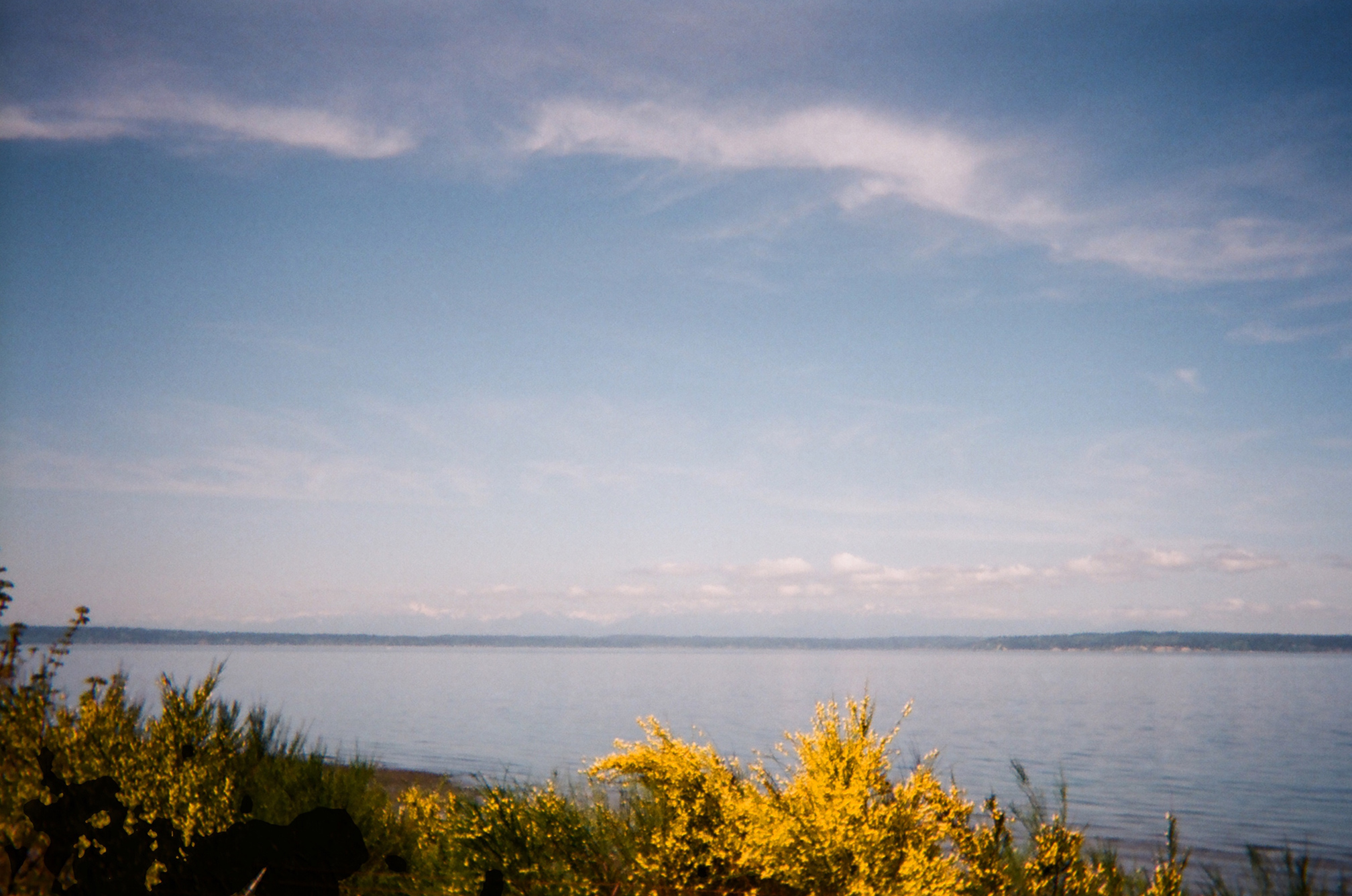
SALISH SEA
The view of the Sound from the bluff. That low, dark line of land is Bainbride Island, and behind that are the Olympic Mountains. Here’s where I once saw a marten scampering along the fence: one long muscle gloved in chocolate velvet. The beach below is beautiful. But I’ve never been on it; it’s not accessible.

WALLINGFORD
Here’s where we used to live: Wallingford. It’s classed as an urban village and so zoned for 8-story buildings. This is the oldest, lowest-slung brick bit of the neighborhood, where we still come every now and again to buy bread and have lunch. That WALLINGFORD sign just above our van was the result of a compromise engineered by neighborhood activists when the beloved local supermarket and its eyesore-turned-icon of a flashing neon FOOD GIANT sign were torn down and replaced by a national chain supermarket.
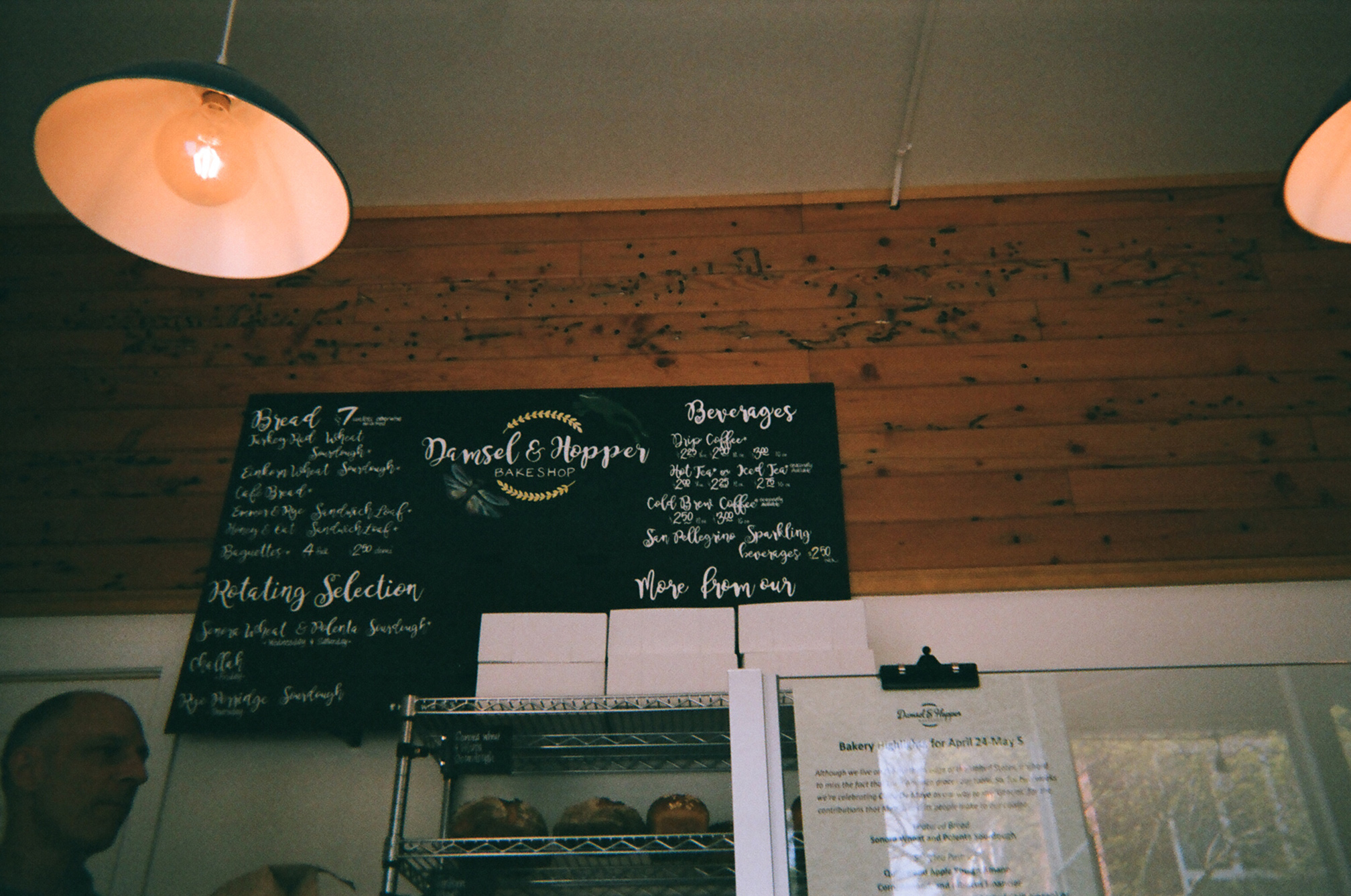
DAMSEL & HOPPER
A wheelchair-vantage view of Damsel & Hopper’s delicious wares. (Shooting indoors is much trickier with a disposable camera. It is so very weird to not have a screen view of what you’ll get. Not knowing how the light will turn out. Not having automatic stabilization. Not being able to zoom and crop and level—all things we all do these days without thinking.) My favorite bread here? Emmer and rye. Or maybe the emmer sourdough. Also, the ginger and orange zest scones are kill-worthy.
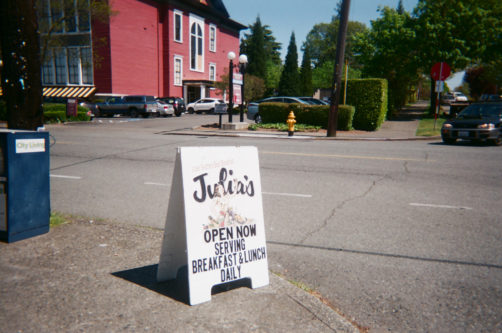
JULIA’S
And then on to Julia’s, a café that feels as old as the neighborhood. It was certainly well-established when we moved in 23 years ago.
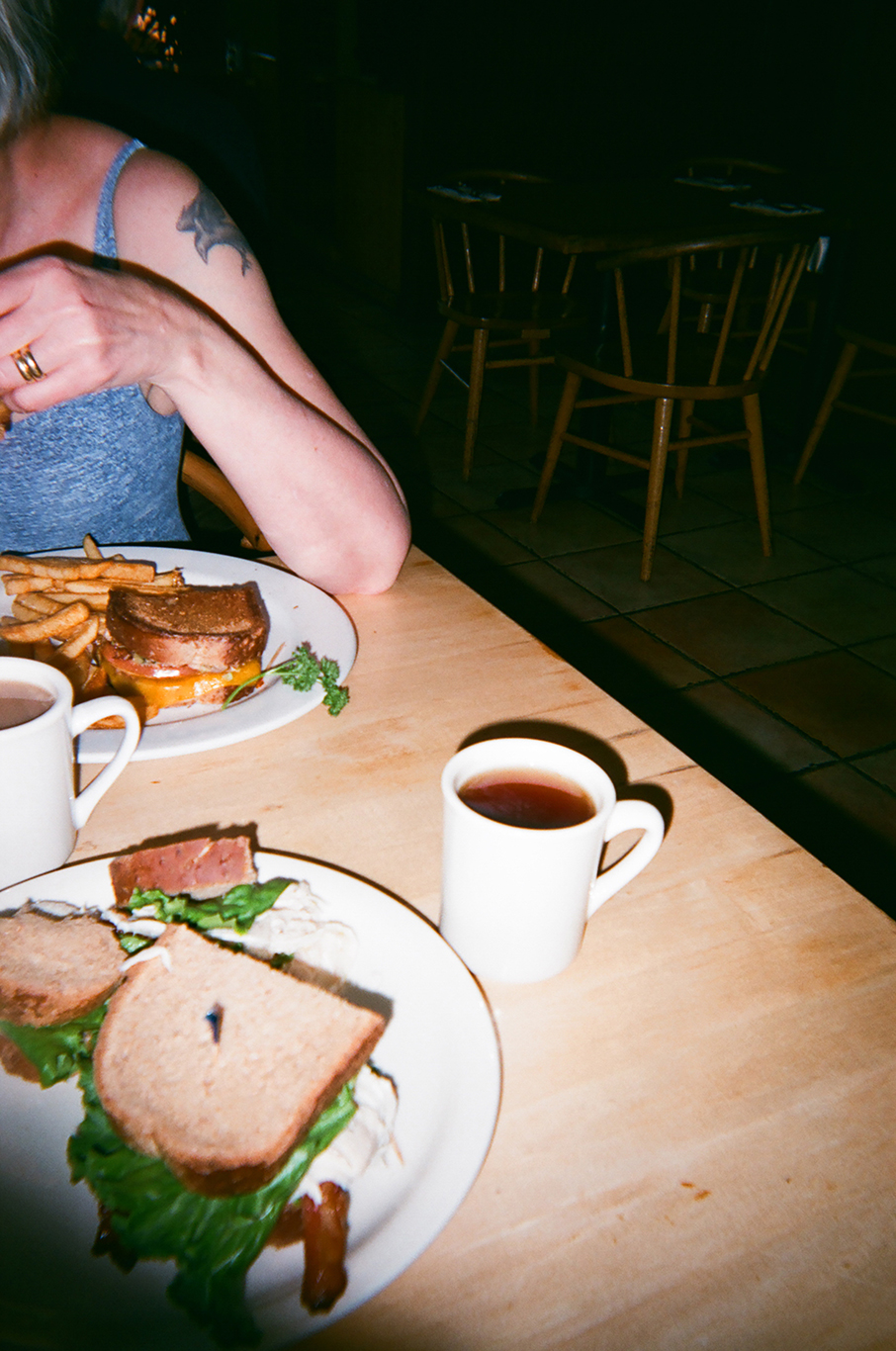
BIRDS
I thought I’d taken a photo of our pristine sandwiches, but it turns out I forgot to wind the camera forward, or didn’t press the black plastic button hard enough, or something. So here it is, half eaten, the Big Bird—home-roasted turkey on whole wheat, with avocado and bacon—with a bonus shot of Kelley’s crow tattoo.
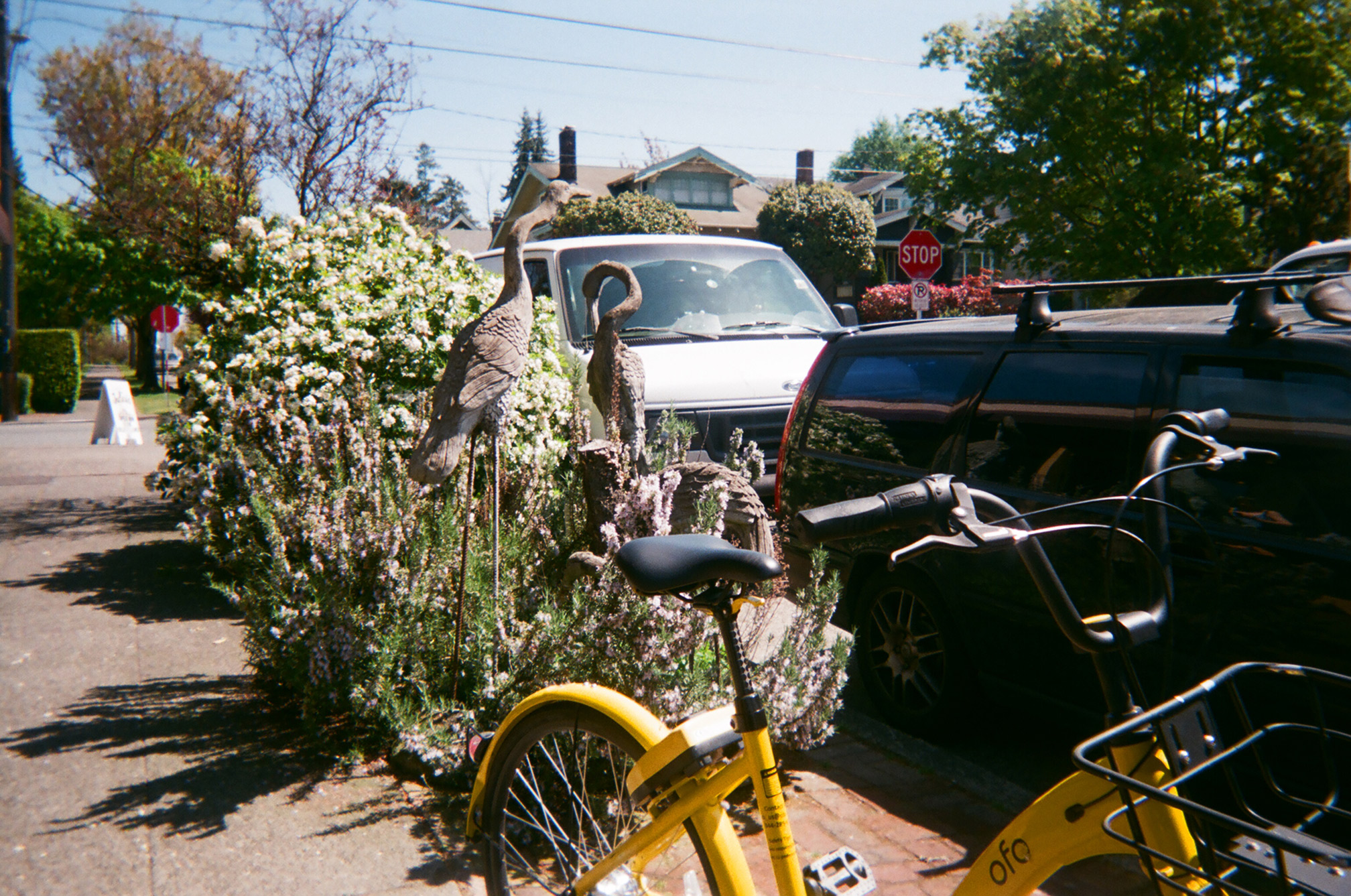
CONCRETE BIRDS
Right outside where we sit in the cafe are two herons sculpted from concrete and rebar. If I thought I could get away with it, I’d steal them. Also if I thought I could get away with it, I’d charge a $1,000 fine to every clueless dick who left their bike-share parked on the sidewalk making it inaccessible for those of us in wheelchair. (Not this person! Whoever you are, good job for putting it to one side! Gold star!)

LOCALS
On the way home we stopped at Phinney Books to check up on the sound system for my So Lucky—book launch on May 15. It’s a small store, but I knew the event would be SRO on a warm evening, with the door open to neighborhood traffic. Amplification for hard of hearing is a must; we also had ASL interpretation. I love Phinney Books. It’s just the right size—and accessible! And our local!—and, more importantly, it’s RIGHT NEXT DOOR TO THE PUB, our other local.
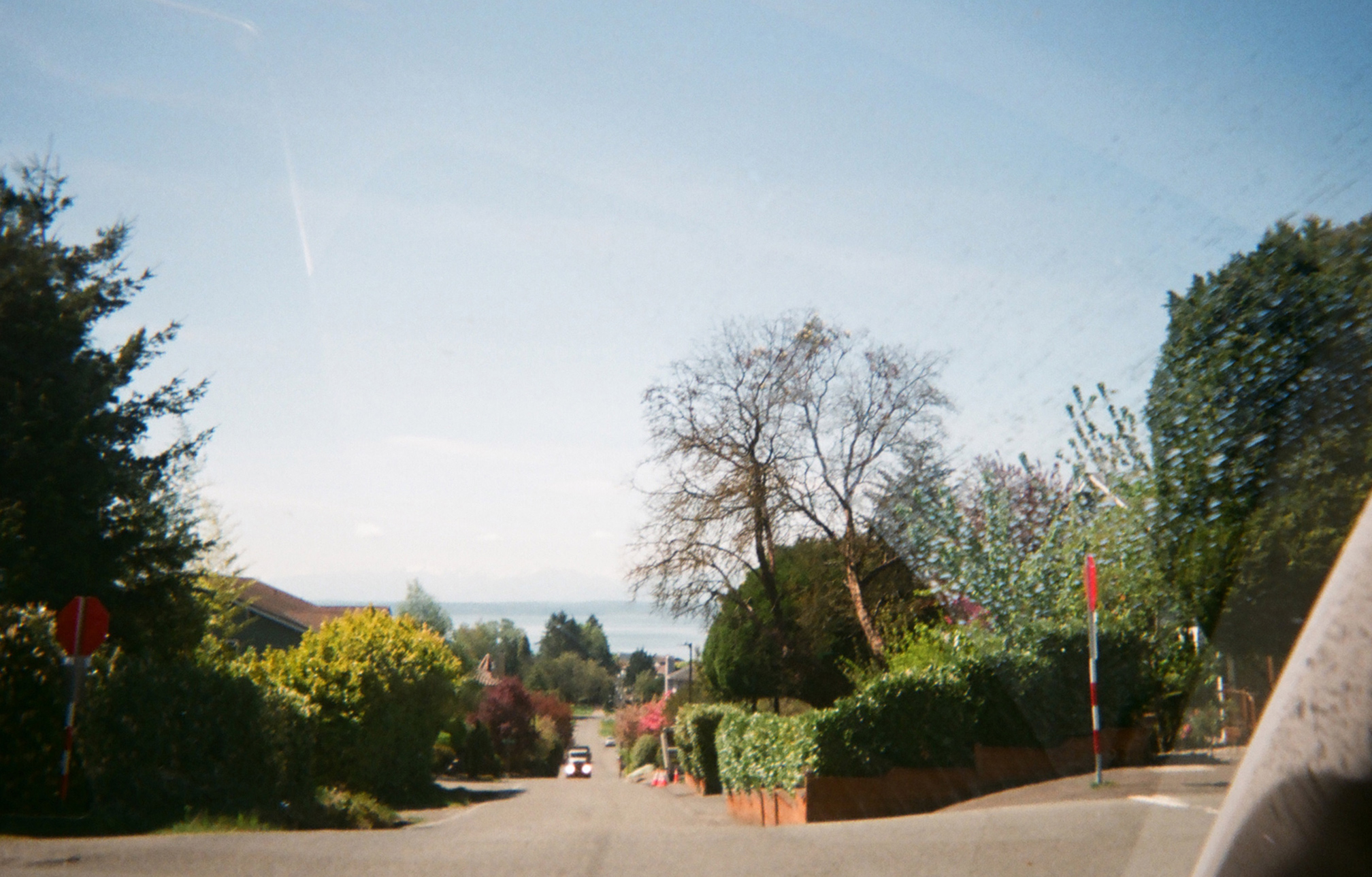
THE ROAD HOME
I’ve taken almost exactly this picture of the road home half a hundred times, usually at night as the sun sets over the Salish Sea. I doubt I’ll tire of it.
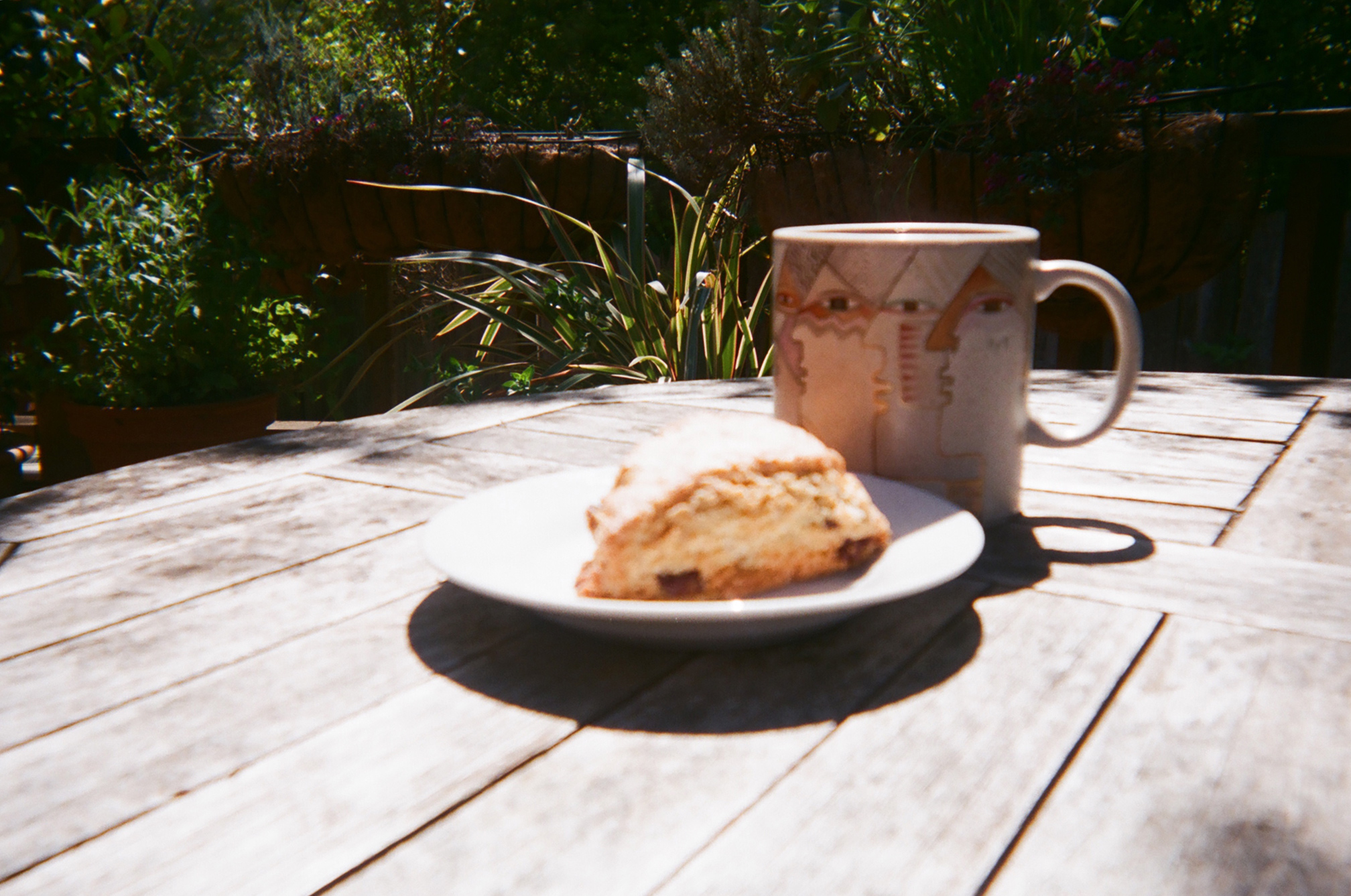
HOME
Irish breakfast tea in my favorite mug, plus a Damsel & Hopper scone, on the back deck surrounded by planters full of herbs and flowers, harassed by a belligerent hummingbird that I forgive because, like the marten, it’s so alive, wild and free.
Nicola Griffith is the multiple-award-winning author of several novels, including Hild, and a memoir. A native of Yorkshire, England—now a dual U.S./U.K. citizen—she is a onetime self-defense instructor who turned to writing full-time upon being diagnosed with multiple sclerosis. She lives with her wife, the writer Kelley Eskridge, in Seattle.
